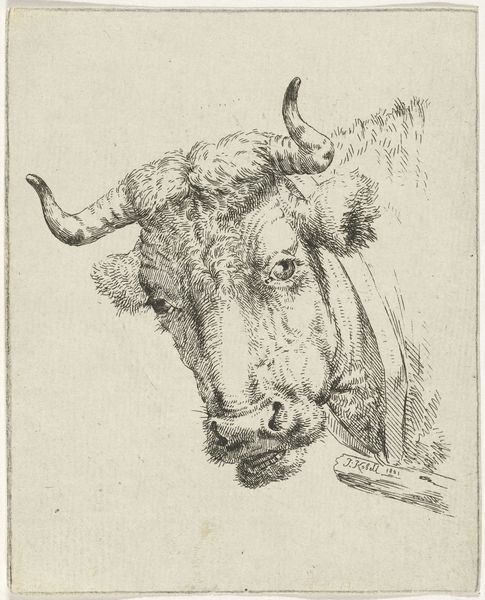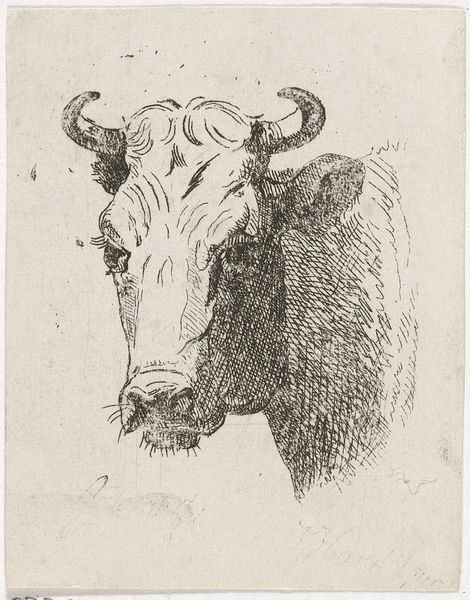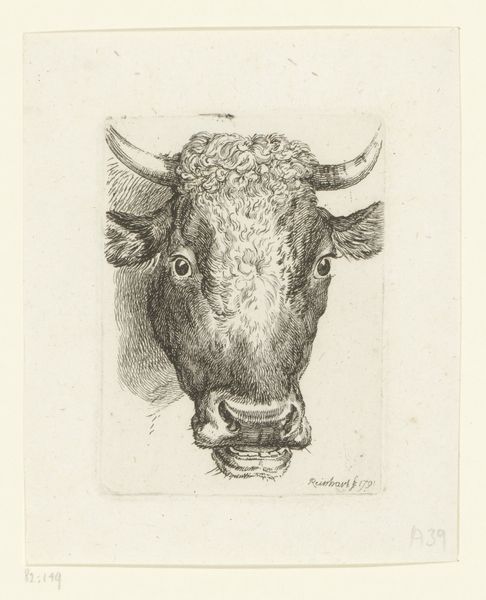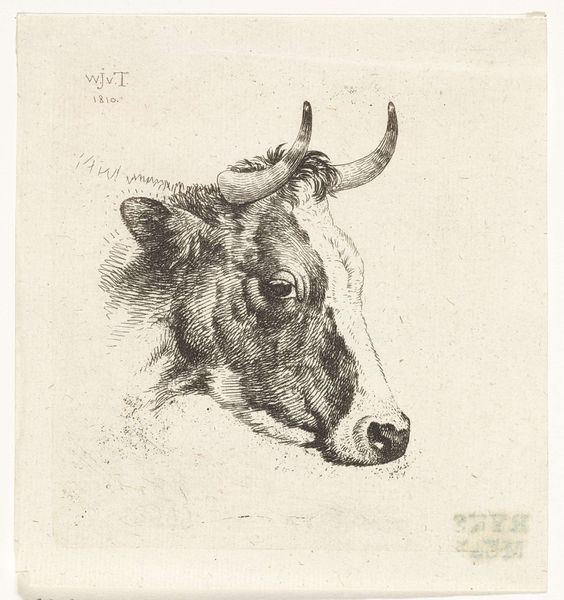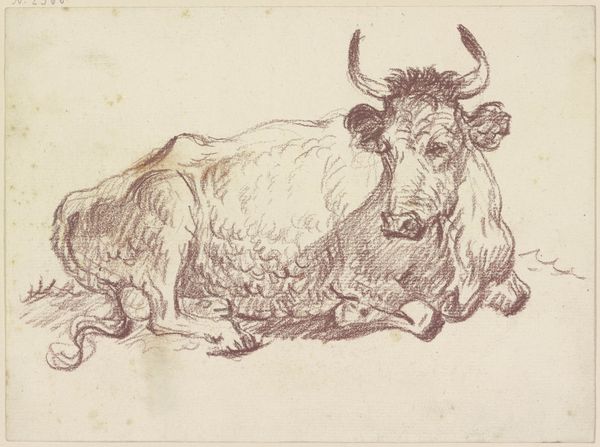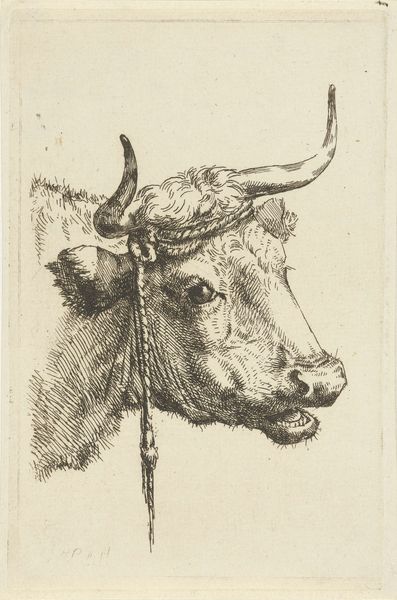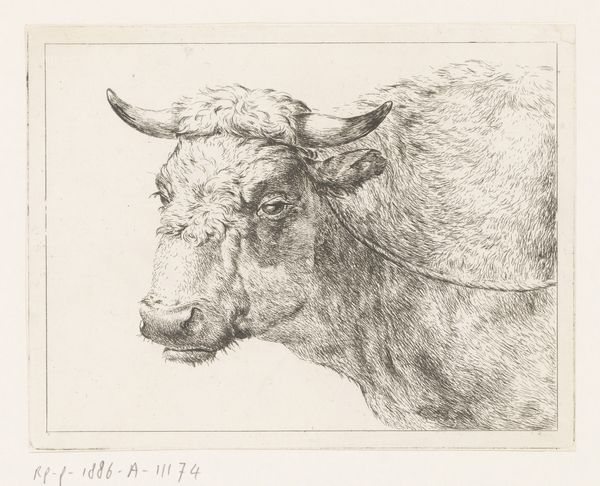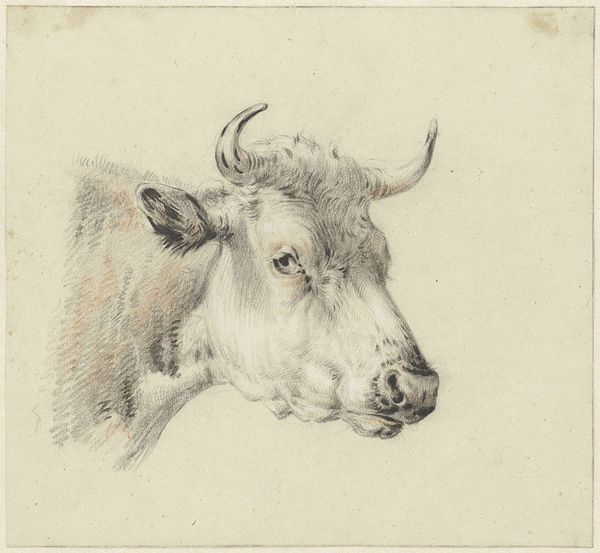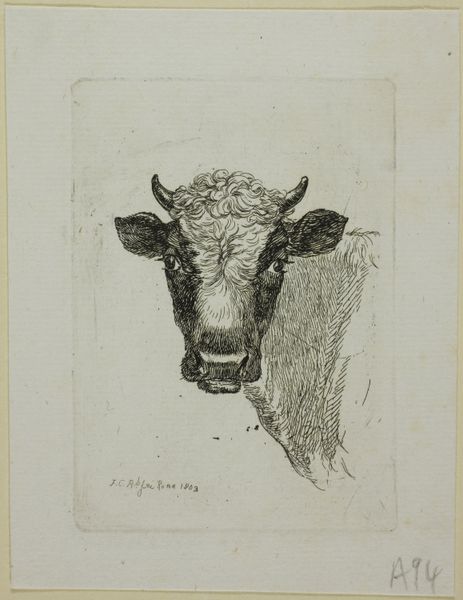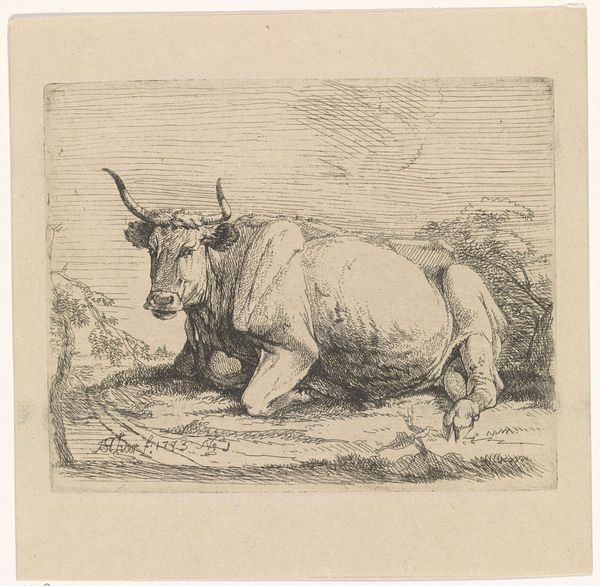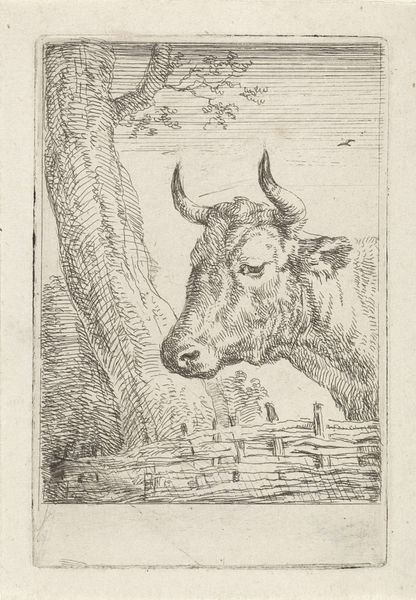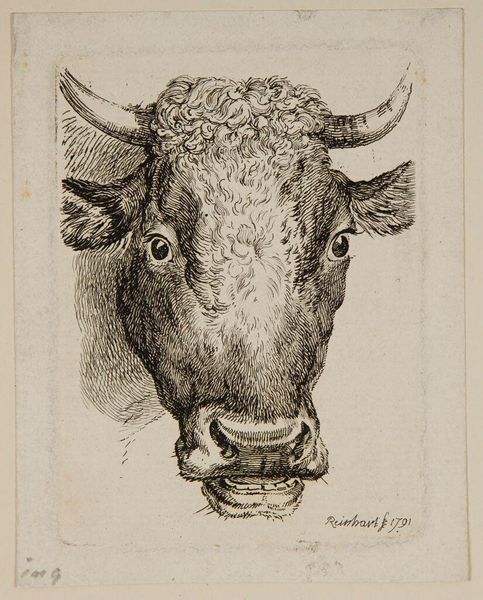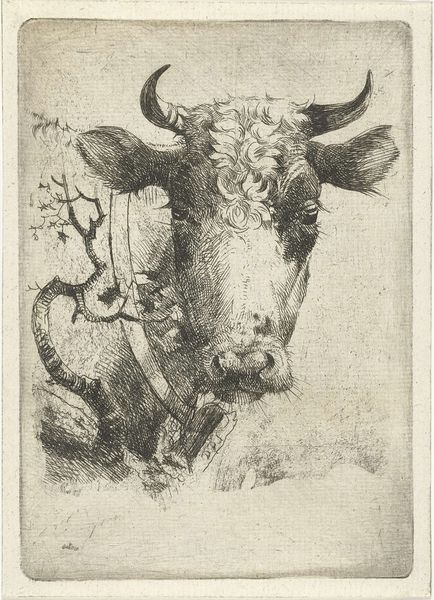
print, etching
#
portrait
# print
#
etching
#
landscape
#
realism
Dimensions: height 145 mm, width 106 mm
Copyright: Rijks Museum: Open Domain
Curator: Here we have Jan (II) Kobell's etching, "Koeienkop," created in 1801. Editor: Its striking use of line immediately creates a feeling of depth. The varying density of strokes gives real weight and presence to the subject. Curator: Indeed. In this piece, Kobell captures a realism characteristic of the Dutch tradition, where rural life and animal portraiture reflected a burgeoning national identity and economic prosperity tied to agriculture. But seeing that, it feels almost like a caricature of the rural, Dutch working class? Editor: Perhaps, but consider the composition itself: the almost brutal honesty of the animal's gaze. The work forces the viewer to confront the animal directly. Curator: Which pushes one to question what that confrontation entails! During this time, increasing agricultural industrialization led to changing human-animal relations. Is Kobell subtly commenting on this shift, making the cow almost a symbol of agrarian dispossession? Editor: Possibly. But let us not ignore the artistic mastery. Look at how the light catches the ridge of the cow’s brow and how he has etched each tuft of hair with such delicate care. It transcends mere documentary. Curator: However, the choice to isolate the cow's head raises some complex questions. The work exists within a context of shifting class structures and agricultural change. The image evokes a critical commentary on our treatment and perception of farm animals. Editor: I concede that its social context enriches its narrative, adding depth to what initially seems a simple portrayal. It is a thought-provoking exercise in both line and history. Curator: Absolutely. It gives us pause to consider not just how things are represented but why, especially during transformative moments.
Comments
No comments
Be the first to comment and join the conversation on the ultimate creative platform.
